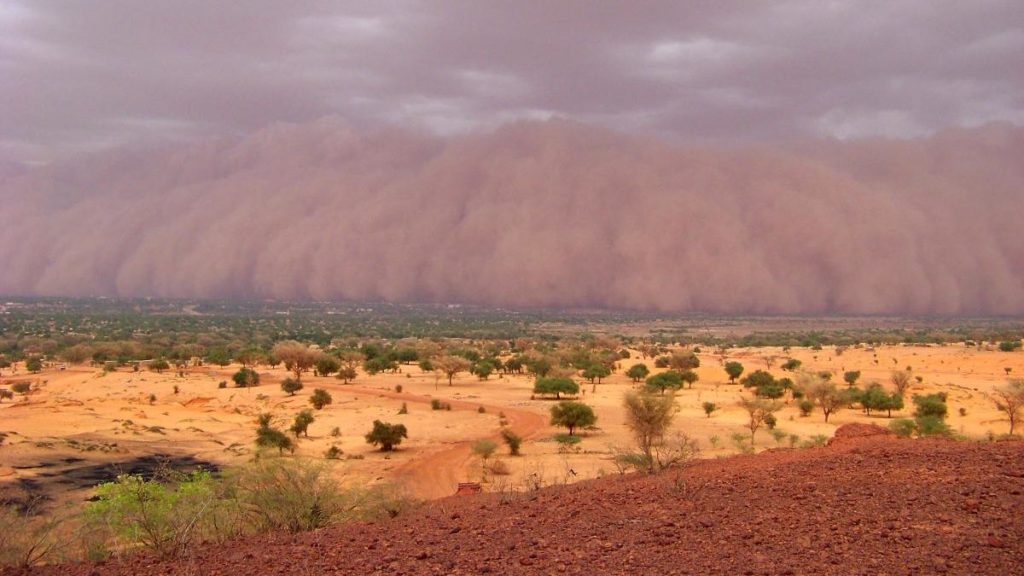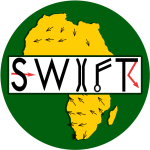Through the collaboration and hard work of weather forecast producers, scientists, and health-sector forecast users, a key outcome of GCRF African SWIFT has been a sub-seasonal forecast warning system of meningitis outbreaks. The product gives local and national health agencies more time to activate emergency response plans to predicted meningitis outbreaks. This collaboration has been pioneered by the African Centre of Meteorological Applications for Development (ACMAD), and U.K. partners of the GCRF African SWIFT project including UK Centre for Ecology and Hydrology (UKCEH), the National Centre for Atmospheric Science (NCAS) and the University of Leeds.

The “meningitis belt” is located across sub-Saharan Africa, from Senegal to Ethiopia, and is associated with an elevated risk of meningitis outbreaks during the dry season (November to June). Around 30,000 cases occur in Africa each year with approximately 10% of infections being fatal and others suffering with brain damage, epilepsy and deafness. Meningitis is an infection of the membrane surrounding the brain and spinal column and incidence of the disease rises dramatically in hot, dry and dusty weather. Alongside dust particles irritating an individual’s airways, they also promote airborne microorganisms to get into the body and cause a meningitis infection. Once an outbreak starts, it can spread rapidly from person to person.
Previous scientific research has shown that meningitis outbreaks are favoured during dry, warm, and dusty conditions. Health alerts before GCRF African SWIFT were based on the analysis of recent weather observations. Using this information allowed health agencies to identify areas where meningitis-risk conditions were developing – but not what was likely to happen over the next one or two weeks. However, with recent advances in weather modelling, scientists can now forecast whether environmental conditions are favourable for meningitis outbreaks. Given the high skill of sub-seasonal forecast models across the meningitis belt during the dry season, a new sub-seasonal warning system of meningitis outbreaks was co-produced to support the prevention and management of future meningitis epidemics within a two week timeframe.
Weather forecasts produced by the European Centre for Medium-Range Weather Forecasts (ECMWF), made available to African-SWIFT through the World Meteorological Organization’s (WMO) Sub-seasonal to Seasonal Prediction Real-time Pilot Project, are used to predict the regions likely to experience a meningitis outbreak in sub-Saharan Africa, giving up to two weeks’ advanced warning of conditions that can increase the risk of a meningitis outbreak. Dr Cheikh Dione, who led the meningitis forecasting project at ACMAD comments, “By analysing factors such as humidity, air quality, temperature and wind speed – we can map those areas where conditions will be ideal for an outbreak to occur. By getting information out to governments and health workers in advance, we give them a window to get ahead of the disease – and to be more effective in their response.”

Meningitis vigilance maps are produced every week during the dry season and show the likelihood of outbreaks. Sub-seasonal predictions of near-surface temperature, relative humidity, and wind speed, along with dust concentrations, feed into the computation of these maps. A weekly meningitis bulletin is produced every Monday from January to June and is composed of a summary presenting the forecast of the vigilance levels of the number of meningitis cases, a description of the atmospheric conditions expected during the week, and the aerosol content of the surface atmospheric boundary layer during the previous week. The World Health Organisation (WHO) and local medical services use sub-seasonal meningitis warnings to support preparedness and response planning, and decision-making on the monitoring of implementation of the response activities.
As was common throughout SWIFT, the effective use of co-production was particularly beneficial for the development of meningitis warnings. The combined knowledge from researchers, forecast producers, and health experts at the WHO strengthened the surveillance and prevention of meningitis outbreaks. Specifically, the forecasts incorporated user-guided thresholds that are more relevant to specific regions and improved the accuracy of health warnings. During co-production meetings, environmental conditions favourable for meningitis outbreaks were presented by ACMAD forecaster producers, and observed meningitis cases were presented by national health services. Based on the climate risk and observed meningitis cases, recommendations could be given to increase preparedness of local services in likely-to-be affected regions.

Dr Ado Mpia Bwaka, from the WHO Regional Office for Africa comments, “being able to predict the likelihood that atmospheric conditions will cause a meningitis outbreak is a powerful tool that helps countries to strengthen meningitis surveillance. It will also help to make decisions about how best to target resources when an outbreak occurs.” Whilst Dr Joshua Talib, a climate scientist from UKCEH, highlights the positive impacts of sub-seasonal warnings: “By making sure the appropriate medical services are on offer to those most likely to be affected by a meningitis outbreak, the number of fatalities and the severity of symptoms is being reduced.” Positive feedback from local medical services throughout the co-development of meningitis warnings has been validating the effectiveness and usefulness of predicting meningitis outbreaks on sub-seasonal timescales. However, as current predictions can only be provided on a country-level due to the resolution of sub-seasonal forecast data, further work is needed to improve the accuracy and communication of sub-seasonal forecasts.
Authors
Gruff Jones, Cheikh Dione, Linda Hirons and Joshua Talib.
